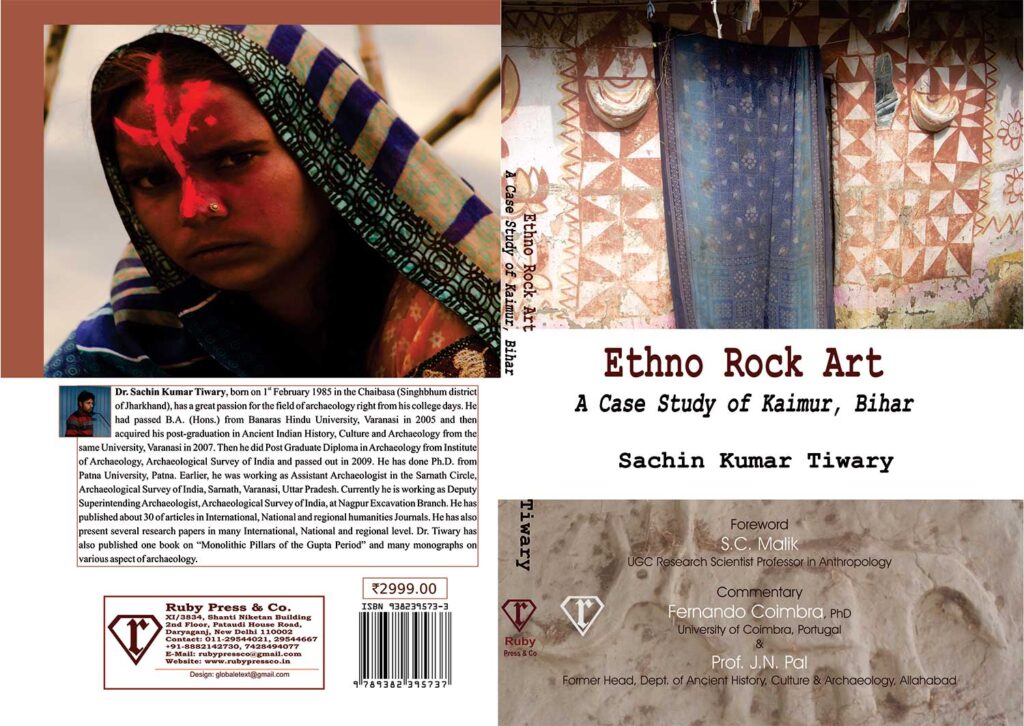By Sachin Kumar Tiwary
Ethno rock art can provide insights of value to Archaeoscientists into how people in the past may have lived, especially with regard to their social structures, religious beliefs and other aspects of their cultureâ€. This way, the methodological approach proposed in this publication can also contribute for the development of Cognitive Archaeology, in particular, and brings, in a general way, important information for future research in the fields of archaeology, anthropology, rock art, ethnography, and symbolism, among others.. The book has three chapters and 103 figures. The present project titled “Ethno Rock Art: A Case Study of Kaimur, Bihar†is a work, which largely depends on field exploration in the study area by the researcher. In spite of extensive field exploration, I have the inspiration from other researchers and scholars who works for the advancement of rock art studies in India. Ethno rock art is one of the neglected disciplines of Indian Archaeology. In this work apart from the brief about the rock art of Kaimur, a detailed attempt has been made to interpret them taking clues from ethnoarchaeological evidence.

The methodology used for the development of the project is divided into three phases: data collecting, analysis, and information stage. The collection of information started from a wide review of books and articles published on the Kaimurian rock art; research about the occupants of those territories through the ages and the survey of specific data about their ethnic art. As far as the research on the rock art of the Kaimur region (Bihar) is concerned, unfortunately, only two articles are written on this regional rock art. The result of the present study has elevated the Kaimur rock art on the national or even international level and I am sure that now the rock art researchers from far off regions or nations may now turn to this region as one of the resource centers of field observation. Although so far, it was more or less in a state of oblivion and regretfully suffered negligence or isolation in such studies.



Rock art was in fact just a ‘go through’ art without considering it ‘specific’ ‘thoughtfull’ ‘deliberatly drawn’ ‘meaningfull’ art etc. But now it gaining importance and Dr. Sachin Kr. Tiwary’s work on ethno rock art of Kaimur regoin will deffinitely open new vistas in this regard. He has worked on this field very èxostively and has many papers on this issue published in national and international research journals. So we hope for another great, thought-provoking, scholaraly work from his pen. All the Best for Bright Future. Amen.!!!!